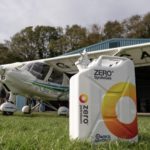The London Air Ambulance’s order for Airbus H135 helicopters is a “great step forward for patients” in the capital, Charles Newitt, the deputy CEO of the charity said.
The helicopter emergency medical service (HEMS) has ordered two Airbus H135 helicopters for the renewal of its fleet under a contract signed at the Farnborough International Airshow.
The two aircraft will be delivered in 2024 and will operate primarily from LAAC’s helipad base at the Royal London Hospital in Whitechapel, which is one of the highest in Europe. LAAC’s advanced trauma team treated 1,713 patients in 2021.
‘Great news for the charity’
Speaking at the airshow, Newitt said: “It’s great news for the charity … to be able to sign a contract to replace our 902s, we’re all very excited about it, it’s a great step forward for the charity and what we do for London and delivery of treating patients in London.
“We looked through a very long process of selecting different HEMS-capable helicopters.
“We down selected to two key competitors. And from those we worked through the detail requirements of each one to see which would best suit the operational requirements for us in London.
“And from that the 135 was the key decision for us to select that aircraft and we believe that’s the best aircraft for us to go forward in London, which is a particularly congested city and provides its own challenges for operating helicopters in the city.”
Emergency medical services
The H135 is a market leader in emergency medical services (EMS) worldwide and can be fitted with a wide range of EMS configurations, providing direct access and ample room for patient care.
The H135 family of aircraft incorporates Airbus’ Helionix avionics suite and has recently received an alternate gross weight increase for an additional 265lbs (120kg) of useful load.
‘Very popular’
Commenting on the deal, Gary Clark, UK head of civilian business at Airbus Helicopters, said: “The 135 and the 145, that’s the bigger sister, if you like, they’re very popular HEMS aircraft, especially in the UK. They both have skids, so they can land on soft terrain.
“They have a very high rotor head, so when the teams are on the ground, they don’t have to worry about the rotor. It has a shrouded tail rotor, so in congested areas it is a very safe aircraft … and it’s just a very usable space in the back of the aircraft to configure for the bespoke needs of each customer.
“We have signed a contract to provide support for the next five years, that’s also extendable up to 10 years.”
Subscribe to the FINN weekly newsletter

